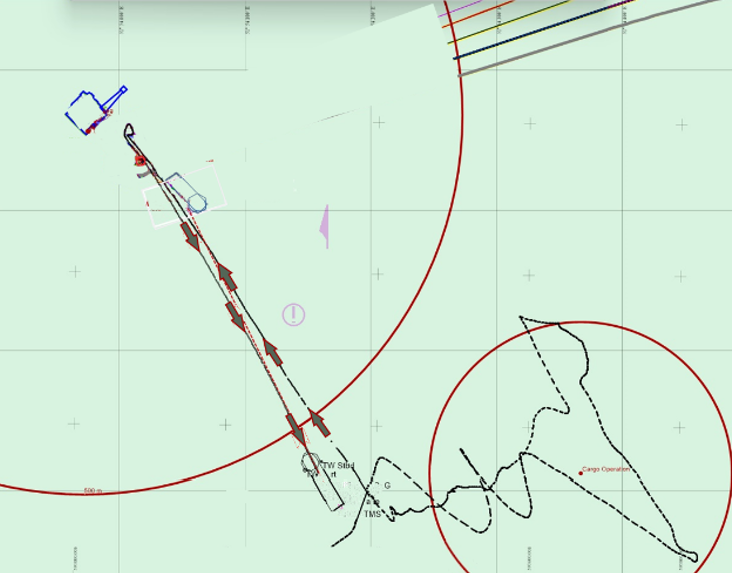IMCA provides lessons learned from an incident in which, a vessel was waiting on weather when it collided with an unmanned and unlit platform.
The vessel had been holding on DP at a fairly constant distance from the platform for about four hours from midnight, but thereafter, started to move towards the platform. The vessel was being driven using “joystick auto heading mode”. The vessel started moving forward and collided with the platform.
The vessel was pulled out to a safe location and then moved out of the field and into port for investigation and assessment. Nobody was injured and the vessel only sustained minor damage to the helideck netting supports. The platform suffered no significant damage.

What went right
- There were no failures to the vessel equipment or systems;
- There was no failure of the management system; the Masters’ night orders, standing orders and the safety management system itself all clearly emphasised watchkeeping duties;
- IMCA Safety Flash 01-24 had been received by the vessel just 10 days before this incident, Item 5 dealt with a similar incident at a wind farm. All the bridge personnel had signed off on a toolbox talk discussing the very issue;
- The vessel operates strictly according to Safe Manning Levels for 24-hour operations, and MLC STCW Rest Hours.
What went wrong
- The second officer was carrying out non-essential paperwork, in contradiction of the night orders, the standing orders, and the safety management system itself;
- Investigation with the crew afterwards suggested that it is considered normal practice even when it is stated as not being permitted – because “somebody has to do it”;
- The Chief Mate was new to the company and the vessel (a little over a month) but had extensive experience as a Senior DPO, a Chief Mate and as a Master on DP2 vessels. On this occasion he allowed himself to become distracted and complacent, it is felt that he might have become a little too relaxed because the vessel was waiting on weather;
- The vessel heading was not intended to be directly towards the platform, but the wind direction and the shape of the holding area meant it was pointing in that direction at the time;
- The Radar and ECDIS alarms were not set, it was not mandatory to use them in any document or Risk Assessment, but the advice given in SF 01-24 was to “Use all available sensors and instruments.”
- This has now been made mandatory across the fleet.
- There was no risk assessment of the holding area as such – it was not considered to be unsafe.
What were the causes of the incident?
IMCA’s member considered the following to be Root Causes:
- Failure to properly monitor the position and speed of the vessel;
- Lack of situational awareness; the vessel was being held approximately 750m from an offshore installation. It was in a blow off position but because of the wind direction, was pointing directly at the platform;
- The Master’s standing orders, night orders and safety management system were not fully followed;
- The second officer, who was officer of the watch (OOW) was engaged in non-watchkeeping duties and had not requested a seaman to assist with the watch keeping.
- A contributory factor was that neither radar proximity nor ECDIS alarms were set.
Lessons learned
- In the safety management system, clear reference has been included stating the requirement to carry out/maintain DP checklists, even when vessel is set on joystick auto heading mode;
- A watchkeeping Job Safety Analysis was introduced identifying different modes of navigation and detailing the recommended positioning and mode for the vessel, especially when waiting on weather;
- There should be no distractions on the bridge, including those caused by reading, electronic devices or irrelevant discussions with non-essential personnel;
- While it is important to keep administrative tasks up to date, someone suitably trained for the task should keep watch or be posted as a lookout if admin tasks are being carried out, maintaining proper and effective watchkeeping;
- Use all available navigation aids, sensors and equipment to establish accurate navigational warnings.
Actions taken
- Updated and reviewed the safety management system to identify ambiguities in wording;
- A daily toolbox talk to be held for watchkeepers with a discussion of the DP mode being used;
- Prevented non-essential personnel from being on the bridge unless necessary;
- Enforced an absolute ban on non-watchkeeping duties unless proper watchkeeping cover is available.

































































